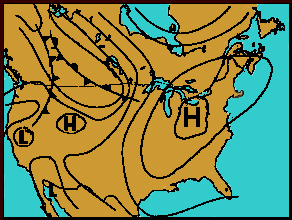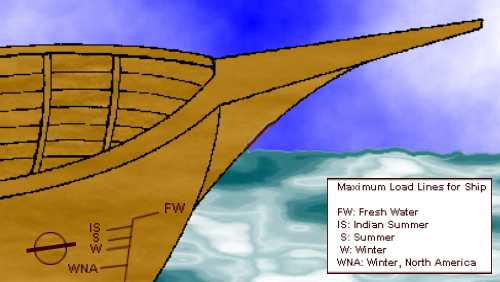 |
 |
| Home | Welcome | What's New | Site Map | Glossary | Weather Doctor Amazon Store | Book Store | Accolades | Email Us |
 | |||||||||
Weather Almanac for October 2001THE HALCYON DAYS OF INDIAN SUMMER"It was Indian summer, a bluebird sort of day as we call it in the north, warm and sunny, without a breath of wind; the water was sky-blue, the shores a bank of solid gold." -- Sigurd F. Olson
A Special Weather RegimeIndian Summer is not, however, a strictly defined meteorological entity and is much an emotional event as a scientific one. Sample the population in North America for a definition, and you will likely get a plethora of thoughts about what constitutes Indian Summer. I am hard pressed, for example, after a decade on the West Coast of Canada to define Indian Summer here because hard frosts are rare in Autumn. If I could, surely it would be quite different from one derived from my four-plus decades living among the Great Lakes. I have no problems, however, in defining Indian Summer from my experiences there. So this essay will take a viewpoint shared with North Americans from the Superior shores eastward through the Lakes and St Lawrence Valley to the Atlantic shores, including the Maritime Provinces, New England and other Northeastern US states. The weather scenario for Indian Summer unfolds with the relaxing of winter's first major bite on the countryside. Frost has been hard and snowflakes may have danced in bitter northerly winds. But as the cold air mass flows off the Atlantic coast, it is replaced by an extension of the subtropical Bermuda High, and a warm, humid southerly air flow becomes established. What makes this situation different from the wedge of warm tropical air found in an approaching low pressure system is that the Indian Summer regime will lock in for days.  Possible Synoptic Weather Map for Indian Summer regime The warmth of this Indian Summer air mass is deep -- extending high into the atmosphere -- and large, often covering the region from the upper Great Lakes, south to the Gulf of Mexico and all along the Atlantic Coast. Its presence alters the flow of the Polar Jet Stream pushing it farther north and thus locking in Indian summer for a stretch. This large, warm air mass characterized by clear skies and light winds, stagnates over an extensive area and may remain unmoved for five to ten days, perhaps as long as two weeks or more. Within the air mass, skies are quite clear, often coloured deep blue with a hazy fringe around its horizon. In the upper reaches of the air mass, the air sinks and in doing so warms to form a subsidence inversion above the surface which strongly inhibits cloud formation. Winds are light and variable, often becoming calm for long periods during the extended autumnal night. After sunset, rapid surface cooling will often form a deep surface inversion layer, and frequently within it fog patches arise. The downside of this Indian Summer air mass is that it is conducive to the accumulation of air contaminants. Within the stagnant air mass, its light winds, nocturnal surface inversions and air mass subsidence inversion may combine to allow the accumulation of air pollutants giving a hazy look to the sky around the horizon and, in many places, producing very poor air quality after several days. Although there are no established criteria for what constitutes an Indian Summer situation, and of course, the criteria that are generally accepted will vary from locale to locale. The broadest definition of Indian Summer conditions includes:
The maximum and minimum temperatures are ballpark figures and vary as one moves north or south, but the Indian Summer period is usually considered as frost free. Eventually, a heavier cold air mass pushing out of the arctic regions breaks the domination of the Indian Summer air mass. The arctic air steers the jet stream and its attendant storm systems back south, and "normal" autumn weather returns with a new wave of frosty nights. Indian Summer is an example of what is known as a "weather singularity," that is, a discernable weather event that recurs around a specific calendar date each year. Winter's January Thaw and Spring's Dogwood Winter are other well established weather singularities in North America. The latter half of October has the most frequent occurrences of Indian Summer in eastern North America. However, it can arrive anytime between late September and mid December. While not all years will have an Indian Summer, some may have two or three such periods. Origins of the TermThe origin of the term Indian Summer to describe this weather regime is uncertain. One explanation suggests that Native Americans recognized the pattern, which they attributed to the good graces of the god of the Southwest. When the Eastern tribes described it to the first European settlers of what is now the United States, the event became known as the Indian's Summer. Another explanation attributes the name to the belief that the haziness of Indian Summer days was caused by prairie fires deliberately set by midwestern tribes. A more remote origin to the name links it with the marine shipping trade in the Indian Ocean. During the predominately fair weather season, ships would carry extra cargoes. To determine safe load limits, the mariners marked their hulls with the initials I.S. for Indian Summer to indicate the safe loading line for this period. How this term relates to autumn weather on the other side of the globe, however, is uncertain and likely only the coincidental joining of the two words into a similar phrase.  Ship Load Lines Showing I.S. designation Studies of American journals, diaries and papers by Albert Matthews (in an exhaustive study of the historical usage of the term written in 1902) indicate the term Indian Summer appears to have gained popular usage around the 1770s. Its earliest written reference, according to Matthews, appears in the writings of Frenchman St. John de Crevcouer. In a letter dated 17 January 1778, he writes: "Sometimes the rain is followed by an interval of calm and warmth which is called the Indian Summer; its characteristics are a tranquil atmosphere and general smokiness. Up to this epoch the approaches of winter are doubtful; it arrives about the middle of November, although snows and brief freezes often occur long before that date." Since de Crevcouer states it is "called the Indian Summer," he implies that the term was already in popular usage when he penned these words. Nearly a century later, Henry Wadsworth Longfellow adapted an Ononodaga tribe story on the weather regime into his classic 1855 poem Hiawatha: "From his pipe the smoke ascending Indian Summer received a further push into American lore when the Chicago Tribune printed an editorial cartoon and essay by John T. McCutcheon on September 30, 1907. Injun Summer became a classic and was re-issued annually until 1992 when it appeared for the last time. According to Tribune chroniclers, although the drawing itself is timeless, the text, written in the vernacular and with the prejudices of the time, is now seen as offensive to Native Americans and has been withdrawn from use. Injun Summer (for the images, see http://mariah.stonemarche.org/poetry/injunsummer.htm) had two scenes. The top one showed an old man and a young boy looking at fields of harvested corn on an autumn day. The spent corn stalks were tied at the tops in bundles to make rows of corn shocks in the barren fields. The man relates a story to the boy about they days when the Indians inhabited that land. To celebrate the bounty of the season, they danced in the moonlight among their tipis. The second panel showed a night scene imagined by the boy and old man where the corn shocks transform into tipis and the Indians appear as ghostly dancers in the smoky atmosphere. The cartoon struck a responsive chord among many Americans and became one of the icons for Indian Summer for many years. Perhaps it will resurface again, minus the offensive text, as many, including myself, remember it fondly from our youth. (I actually did not remember that it had text until I was researching for this piece.) Similar weather singularities to the American Indian Summer are know in Europe and take on a variety of names such as Old Wife's Summer and Second Summer. In Poland, the period is called God's Gift to Poland, while the English call it All Hallow Summer or the Summer of the saint whose day falls closest to the autumnal period when the Indian Summer weather occurs. Central Europeans often refer to similar weather conditions as the "halcyon days," harking back to Greek mythology. A Final Thought
I'll end with a quote from American poet Walt Whitman that I feel best summarizes the joys and sensuality of the period: "that wondrous second wind, the Indian summer, attains its amplitude and heavenly perfection, -- the temperatures, the sunny haze; the mellow, rich, delicate, almost flavoured air: Enough to live -- enough to merely be." Written by
|
|||||||||
 |
To Purchase Notecard, |
Now Available! Order Today! | |
 |
 |
NEW! Now |
The BC Weather Book: |


